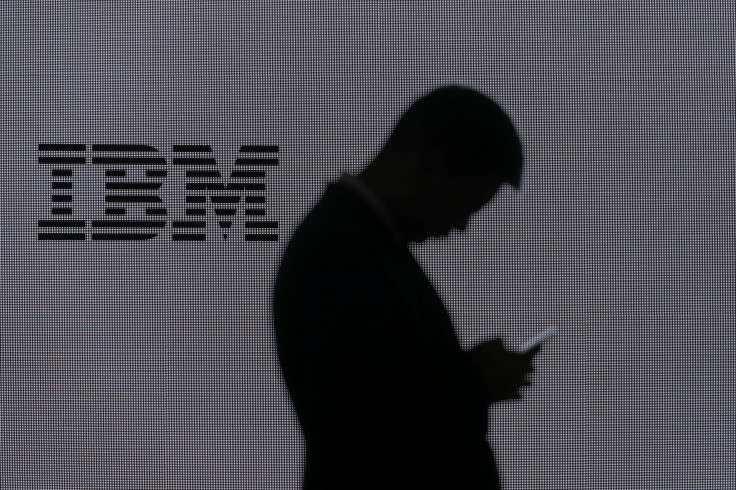Where Will IBM Be In 5 Years?

IBM's (NYSE:IBM) immediate future offers both promise and uncertainty. As the company seeks to integrate Red Hat into its operations and further transition into a cloud company, CEO Ginni Rometty announced she will depart her post in April. The stock has not fared well under Rometty. IBM stock went for about $186 per share when she took over as CEO in January 2012. Today, it sells for about $153 per share.
Now, as the head of IBM's cloud division takes over the company, investors will see if new leadership can turn IBM stock around. To that end, the performance of incoming CEO Arvind Krishna will likely determine where IBM stock trades five years from now.
IBM's new direction
The company has reinvented itself many times since its founding in 1911. IBM is now working to recreate itself again, making the multinational information technology company increasingly into a cloud company to compensate for the growing concern that most of its divisions are seeing declining revenue. To speed along this reinvention, it purchased Red Hat for $34 billion in 2019.
Investors don't yet know if Krishna can orchestrate a turnaround. But they did greet his appointment to the position positively by pricing up IBM stock more than 13% since the company announced the change on Jan. 31.
Born in India, Krishna has worked at IBM since completing his Ph.D. at the University of Illinois in 1990. He rose in the ranks, eventually becoming the senior vice president of cloud and cognitive software. This has led many to make comparisons to Satya Nadella, another Indian immigrant, who rose to the CEO position at Microsoft (NASDAQ:MSFT) after leading its cloud division. Many credit Nadella with turning Microsoft around and making it the third company to reach $1 trillion in market cap.
Will Krishna succeed?
It's too early to tell whether Krishna will have the same effect on IBM. By putting the head of the cloud division in charge of the entire company, it's clear IBM is signaling Wall Street that it will definitely go in that direction.
However, Krishna and Nadella are different people; by no means do similar resumes promise similar results. Moreover, Microsoft made this move six years ago, when the cloud environment was dramatically different and Amazon was its only sizeable competitor. Now Alphabet, Apple, and numerous businesses large and small are competing in the cloud market. Even with the help of Red Hat, becoming a leader in the cloud will become a challenge.
Also, the cost of buying Red Hat placed IBM in a difficult position. With the purchase, IBM's long-term debt rose to $58.4 billion as of the end of the second quarter (up from $39.7 billion in the previous quarter). Two quarters later, Long-term debt now stands at $54.1 billion, but it remains a considerable burden since the company only holds $21 billion in stockholders' equity (the value left after subtracting liabilities from assets). And with only $8.2 billion in cash, IBM's growth options if its cloud strategy fails are greatly reduced.
IBM offers compelling financials for buyers
Still, this company hasn't survived for more than 100 years without adapting to changing times. Loyal investors have to assume it can do so yet again.
Moreover, a turnaround may already be underway. IBM's profits hit a low point in 2017 when the company earned $5.8 billion. By 2019, net income had risen to $9.4 billion. This happened even though three of IBM's five divisions saw revenue declines in 2019. Analysts also forecast that profit growth will average 7.3% per year over the next five years.
Furthermore, the forward P/E ratio comes in at just 10.8, less than half of the average P/E ratio of 22.4 for the S&P 500. Investors can also earn a dividend yield of more than 4.1%, a payout that has increased for 24 consecutive years. The dividend payout ratio, the percentage of profit going to the dividend, now stands at 60.8%. That's a significant expense but a manageable rate for this company. And with IBM on the cusp of "Dividend Aristocrat" status, the payout hikes will more than likely continue.
IBM's future is in Arvind Krishna's hands
In the end, company leadership will play a significant role in determining where IBM stock trades five years from now. Though the company appears poised to follow in Microsoft's footsteps, investors cannot know for sure that history will repeat. Also, given the declines in most of IBM's divisions and the company's financial situation, IBM does not have an obvious Plan B should its cloud strategy fail.
Plan A appears solid with an incoming CEO comes from the cloud division (a current growth area for the company) and overall revenue and profits trending higher since 2017. Furthermore, with a low P/E ratio and a rising dividend yielding over 4%, investors have some incentive to open a position.
But, in the end, where IBM will be five years from now depends on the leadership of Arvind Krishna. If he can turn IBM into a major cloud player, IBM stock will likely trade at much higher levels by 2025. Should he fail, it may point to serious trouble for this tech stock.
This article originally appeared in The Motley Fool. John Mackey, CEO of Whole Foods Market, an Amazon subsidiary, is a member of The Motley Fool's board of directors. Suzanne Frey, an executive at Alphabet, is a member of The Motley Fool's board of directors. Teresa Kersten, an employee of LinkedIn, a Microsoft subsidiary, is a member of The Motley Fool's board of directors. Will Healy has no position in any of the stocks mentioned. The Motley Fool owns shares of and recommends Alphabet (A and C shares), Amazon, Apple, and Microsoft and recommends the following options: long January 2021 $85 calls on Microsoft and short January 2021 $115 calls on Microsoft. The Motley Fool has a disclosure policy.





















